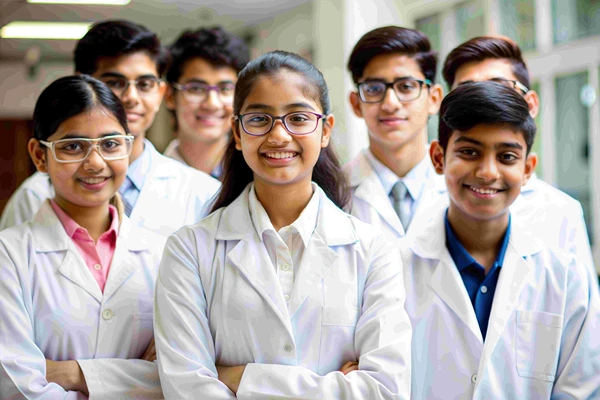Starting a Path to Medicine: Resources for Young Students
The ride to a successful medical career can and should start as early as possible. One way to guarantee this is to introduce young students to resources that set them on the right path to medicine if that’s what they’re passionate about. Building a strong foundation early can make all the difference
Naturally, you may wonder: what resources are these? Well, here are a few.
Medical School Career Exploration Tools
Medicine is one huge field, and to be honest, most kids may not realize that there are way too many options than just being a “doctor”. Med school career exploration tools can change all this. These resources can help your child understand the variety of roles in healthcare and which medical school program fits their personality and skills.
Start with interactive websites packed with information on the medical profession. These sites can help break down what each medical specialty involves, the education prospective med students need, and even average salaries. This can be especially helpful if your child is curious but doesn’t know where to start.
If your young one is already in medical college and is considering internships, you can take it a step further and help them explore pre-med internships or any other opportunities to set them on the right career path. When they know the options open to them, they are likely to make strategic decisions that point in the right direction and improve their odds of success.
Mentorship Opportunities

Kids often dream about being a doctor, but they usually cannot 100% tell what it involves. A mentor can help bring the idea of working in medicine to life. Do you personally know a nurse, physician, or paramedic? Ask if your child can have a heart-to-heart with them about their job. Many professionals wouldn’t mind sharing the ins and outs of their medical practice.
If you’re considering more formal options, some hospitals and clinics have shadowing programs set aside to introduce high schoolers to basic medical knowledge. The point of these programs is to allow students to observe different medical professionals during their day-to-day tasks. What better way for an aspiring medical student to come to terms with the realities of medical school and career than through this personal approach?
But if you don’t have access to professionals who can engage your young ones, you can research different online platforms that match students with pros willing to share advice and guidance. You can’t miss one or two medical doctors who are open to sharing the ins and outs of medical education.
Volunteering and Community Service
There are many people out there who could use some help. Your young doctor-to-be can volunteer where needed and start making a difference as soon as possible. Apart from gleaming in medical school applications, volunteering also helps build empathy. Ask anyone in the field; this is a resource they can’t do without.
Luckily, potential medical students won’t run short of volunteer options. You can start with your local centers. Many community health clinics or hospitals have volunteer programs for high school students. They could help patients find their way around, maybe deliver comfort items, or assist with basic clerical tasks.
These jobs aren’t directly related to med programs, that’s true. But they teach something else: responsibility, communication, and professionalism. If your child is too young for these programs, look for age-appropriate opportunities. They could perhaps volunteer at a food bank, assist in community clean-ups, or help elderly neighbors get around. That’s a great way to foster in them a sense of service.

Science-Focused Reading Materials
There’s a whole world of reading materials that can help your young ones become attuned to the sciences. But to make it work, you’ve got to get them reading materials that are just right for their ages.
Younger kids? Stories like The Magic School Bus: Inside the Human Body are a great option. It makes pretty difficult topics like anatomy fun and easy to understand. Middle schoolers might have a lot of fun with books like The Boy Who Harnessed the Wind or Human Body Theater. They do great work introducing medical and scientific concepts in engaging ways.
As they advance to junior year and later senior year, you’ve got to take them a little deeper, too. Books like When Breath Becomes Air by Dr. Paul Kalanithi can take them through the rollercoaster life, aka, challenges and rewards of becoming a doctor.
The Little Medical School: How to Be a Doctor Kit is a lovely option if your young student is more hands-on. It comes with interactive projects like practicing sutures or building a stethoscope. You can also consider resources introducing them to organic chemistry, scientific research principles, etc., depending on their needs.
Final Thoughts
Getting your young ones on the path to medicine early can be enough to give them a head start. They get to know early enough if it’s something they want to do and, if yes, how to prepare and what to expect. So, give your young students this gift by getting them the right resources to set them on a path to success. It will serve them well when they find what they love to do, and will give them motivation to work toward career advancement throughout their working life.




